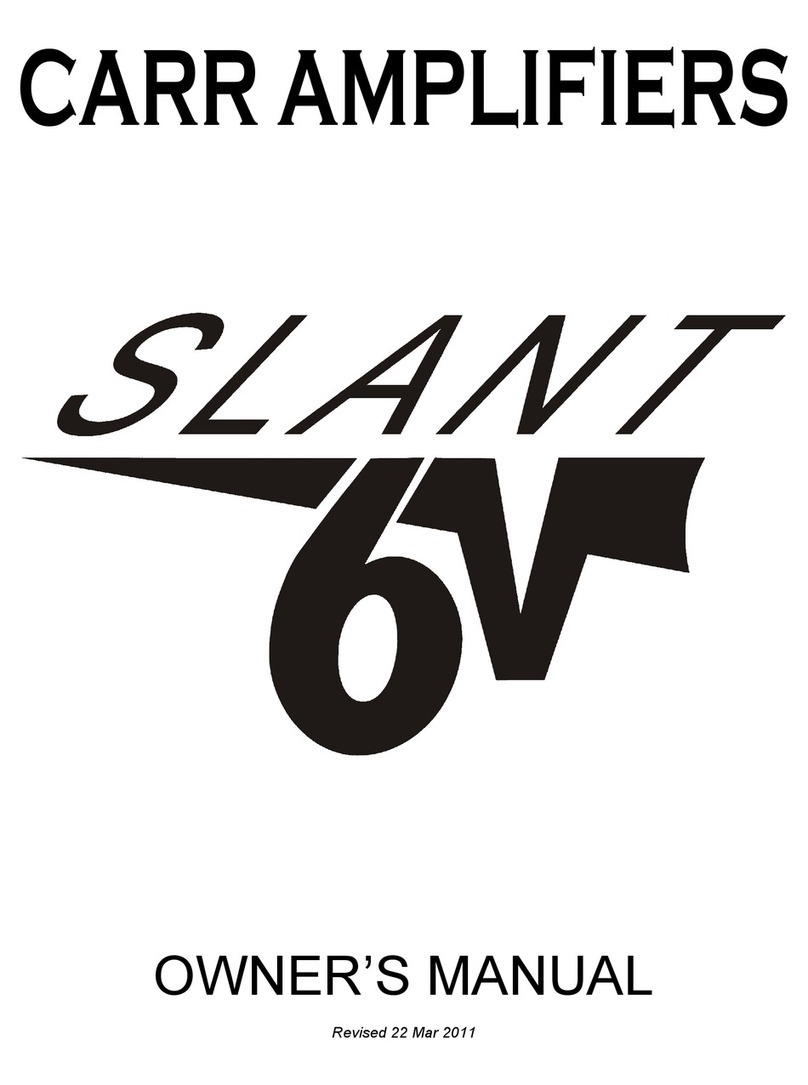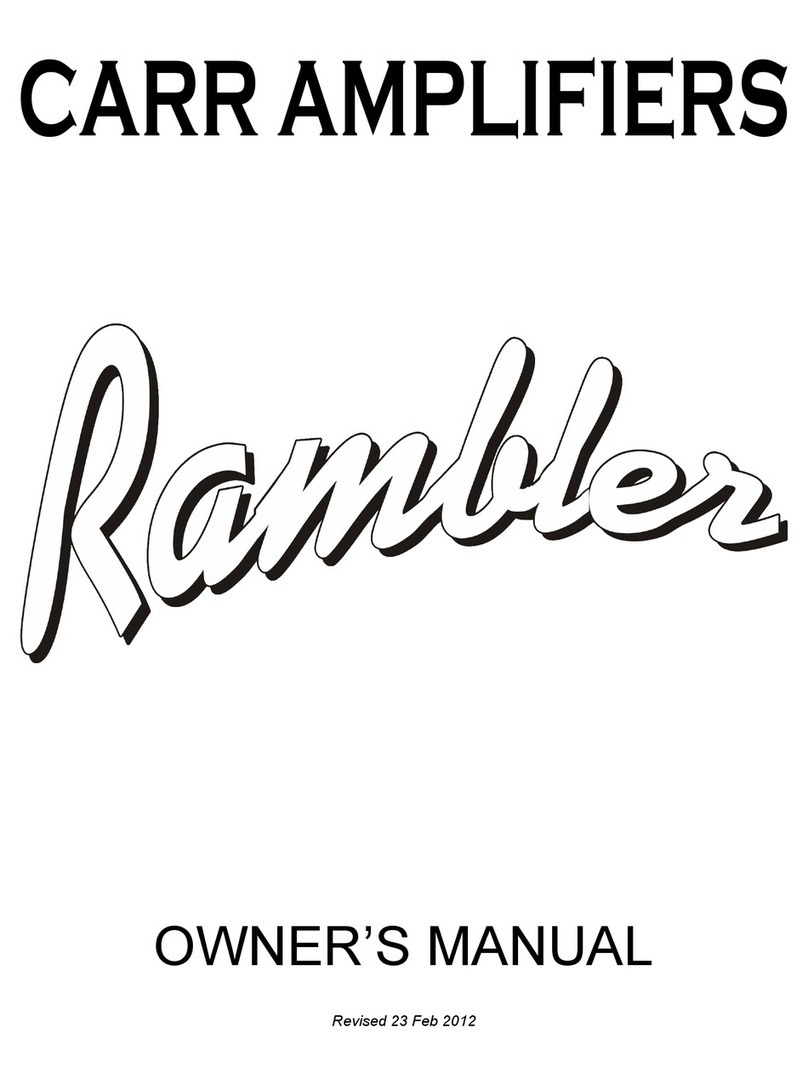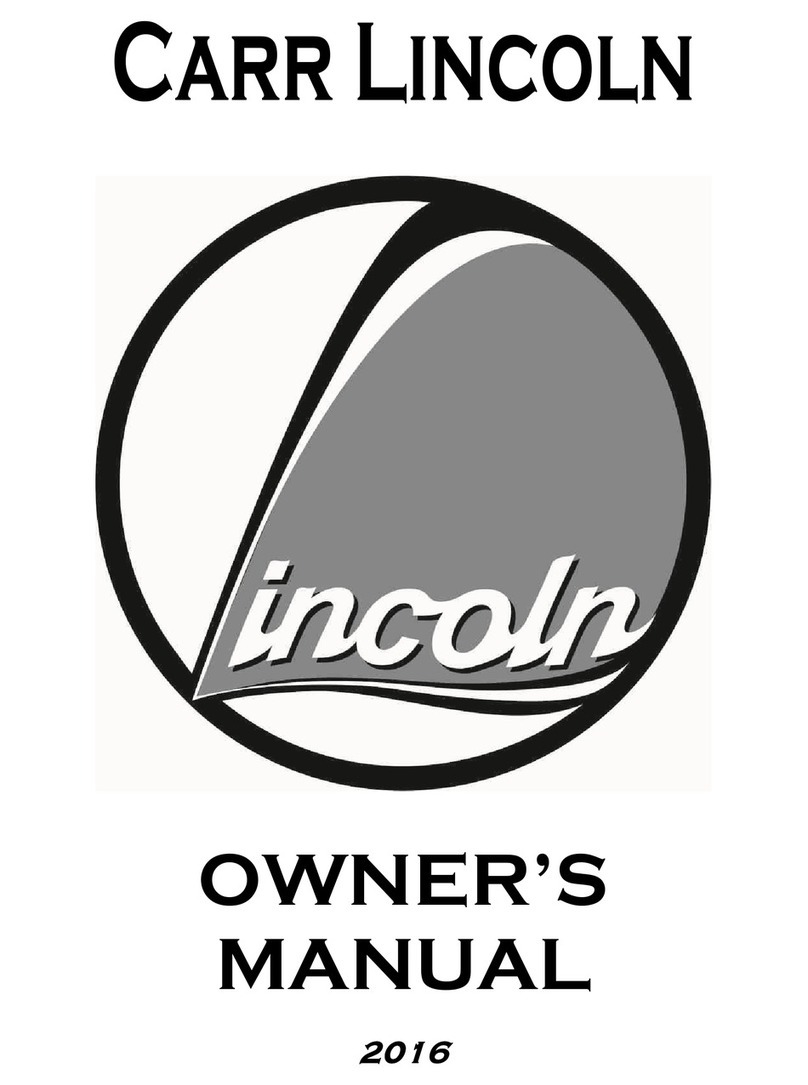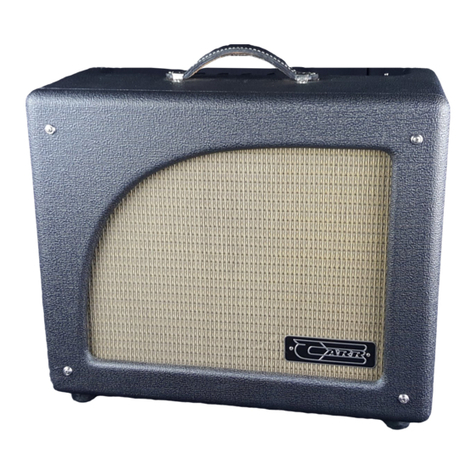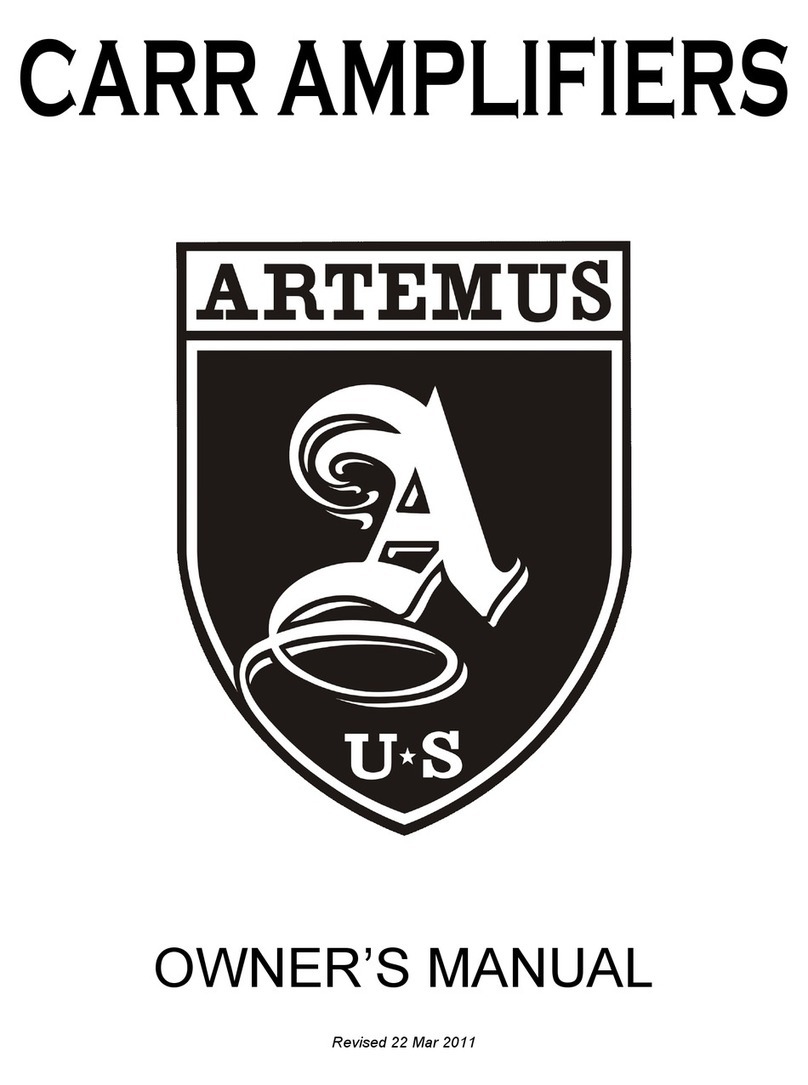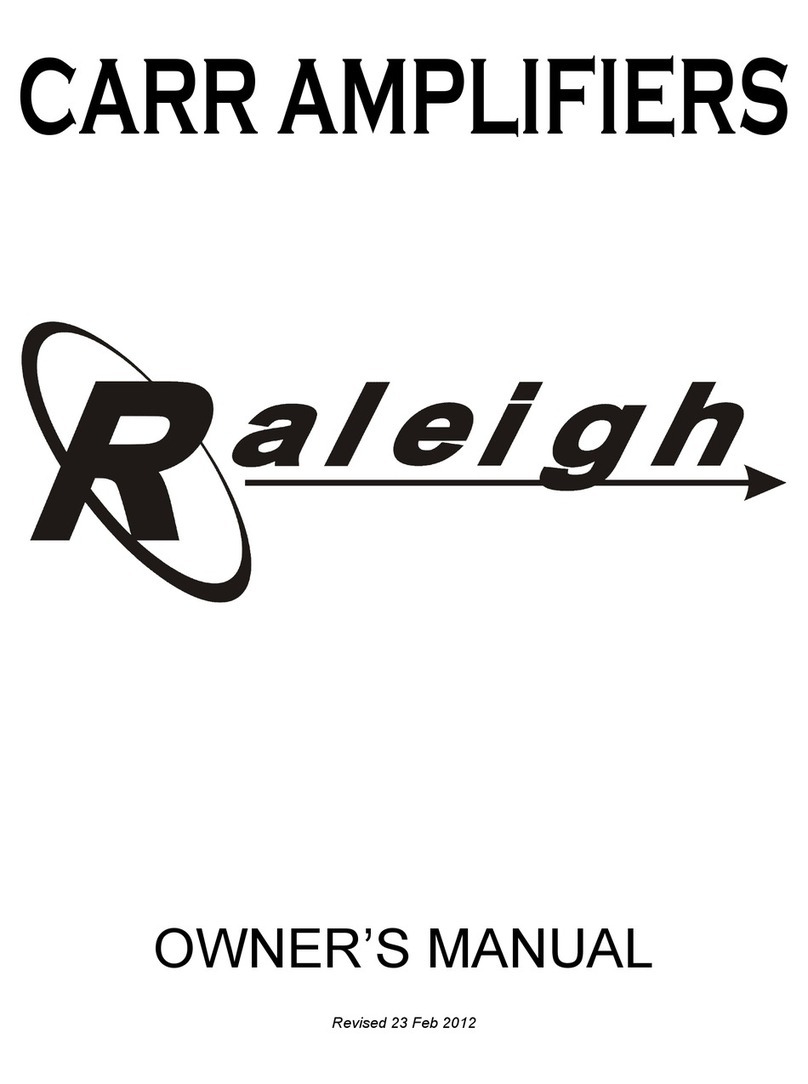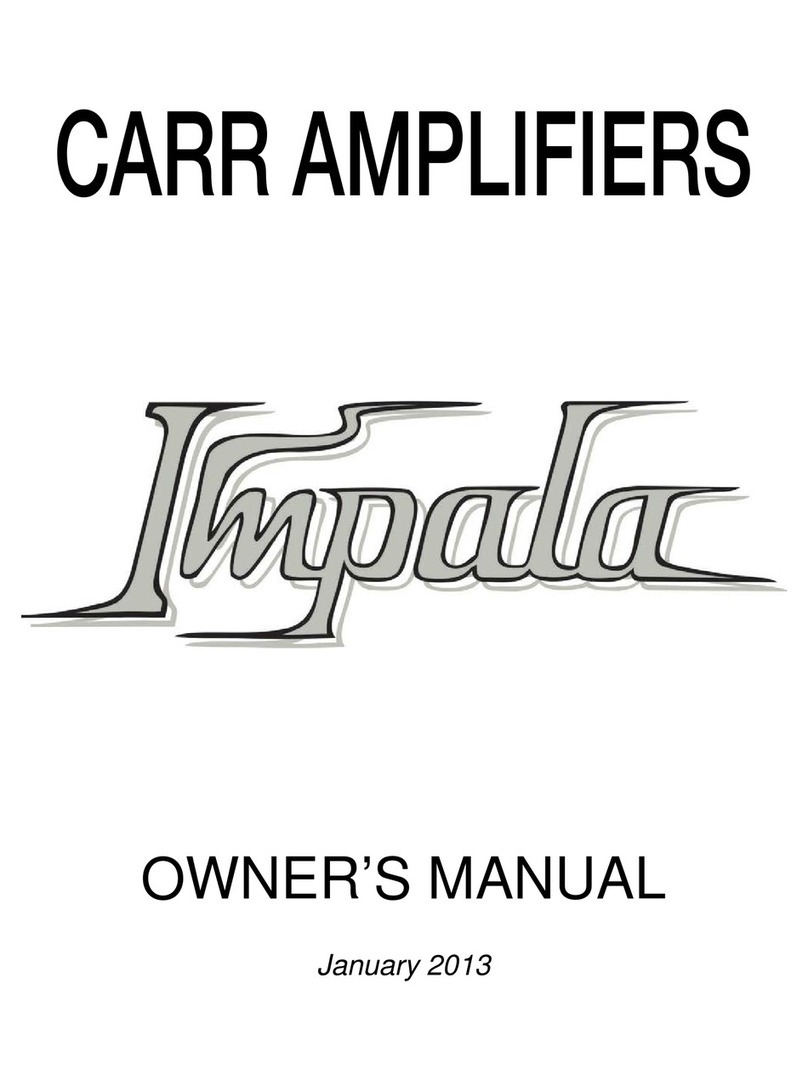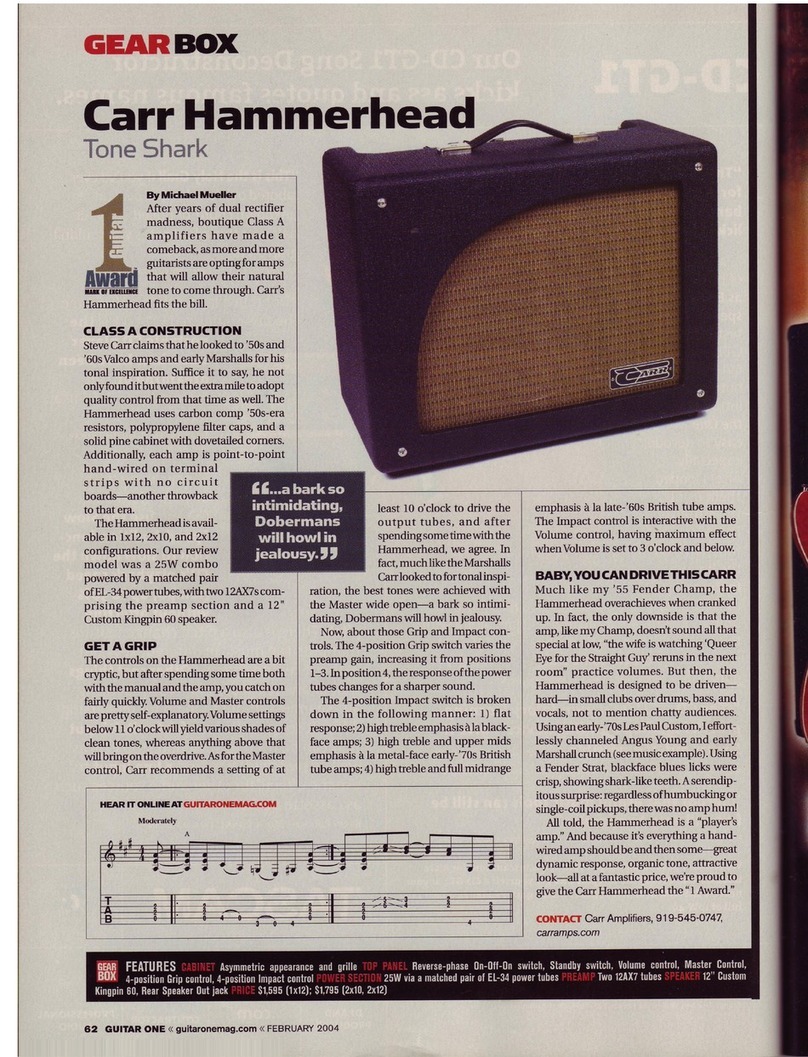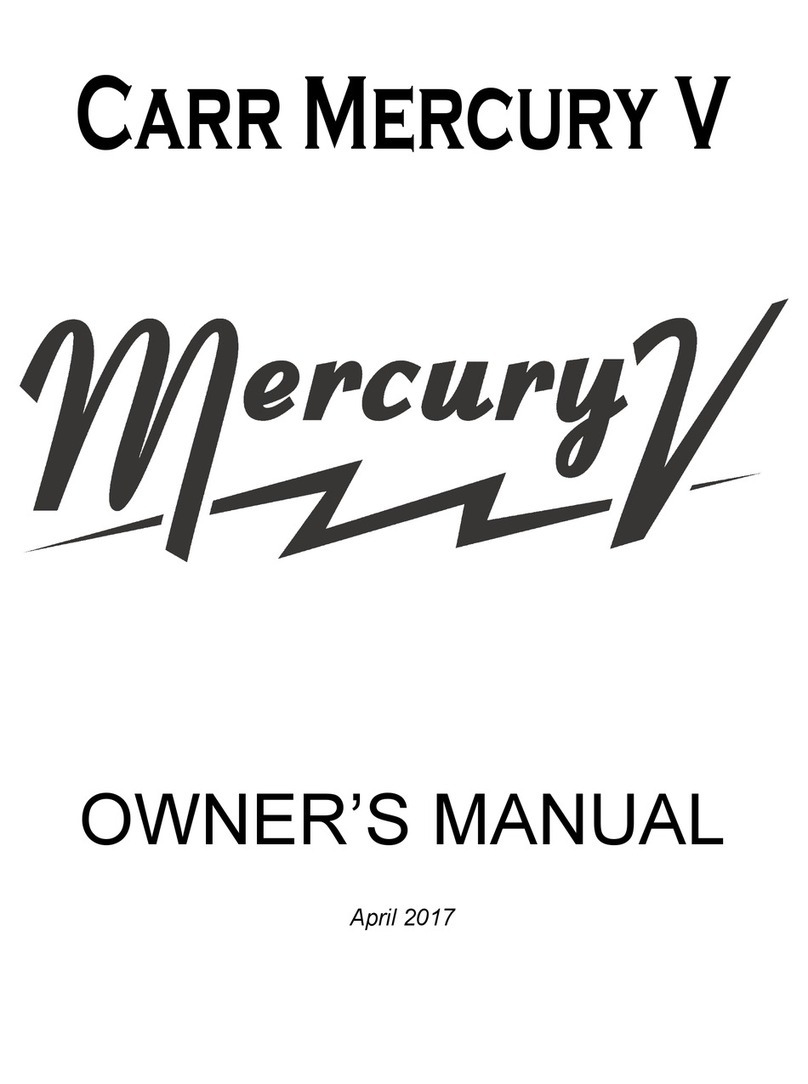
1
The Viceroy Instructions
Thank you for purchasing a Carr Viceroy amplifier. The Viceroy model employs pure and
simple, classic 60’s American-style preamp circuits combined with output sections owing
more to the late 50’s. This unique blending yields very rich clean tones and chunky, smooth
overdrives. Using this classic circuit heritage as a springboard, we have refined and
innovated, creating unique circuits (Drive and Boost) which bring players new sonic
palettes. Also you will find the Viceroy works exceptionally well with pedals – staying
dimensional and bringing out the best from your guitar. Please take time to familiarize
yourself with this manual.
Volume – Adjusts the loudness of the amplifier. Clean sounds are generally at settings less
than 1 o’clock on the dial while higher settings yield more and more overdrive.
Treble – Varies the level of high frequencies from dark to bright.
Middle – Varies mid frequencies and is very influential in taking the tone from crystalline to
forward sounding. The Mid and Treble controls are interactive, so for the darkest sound, turn
both down; conversely, for the brightest sound, turn both up. The Mid control is also a
switching pot that engages the Boost function. See Boost below.
Boost – The Boost function increases midrange and gain. When the amp is set for a clean
sound, the boost will provide a large volume increase and thicken the tone for an immediate
and cutting lead or loud rhythm tone. When the amp is turned up for overdrive, the Boost
will provide a moderate increase in volume and add fantastic grind with a thick, smooth
compression. The Boost partially bypasses the tone stack so the tone controls will have little
effect when the boost is on.
The Boost can be activated in two ways: via the Mid control or the included footswitch.
Using the Mid control applies a fixed amount of boost to the signal, while using the
footswitch allows you to vary the amount of boost to suit your needs. To activate using the
Mid control, turn the Mid knob all the way down until the switch is engaged. To use the
footswitch, set the amp to Standby and plug the footswitch into the Footswitch Jack found
between the third and fourth preamp tubes (see Chassis Diagram). Return the amp to Play
mode and turn the Boost on and off via the foot button. The amount of Boost can be varied
using the knob on the footswitch. When the foot pedal is plugged in, the Mid control switch
is defeated.
Bass – Varies low end from lean to full. Generally, the louder you play the amp the less
Bass you will need as the amp sounds fuller and fuller as you turn up the Volume. To retain
clarity, it is best to turn the Bass down at high volumes.
